Very important: the ‘Institutional Care in Kent’ conference scheduled for this Saturday 30 September has had to be postponed due to the rail strike, unforeseen issues relating to catering and other matters. Sorry to disappoint people but we are intending to re-schedule to Spring 2024 and possibly a weekday. More on this in the future and thanks for your support.
Thinking about events in October, the Centre is working with the Friends of Canterbury Archaeological Trust for the October lecture, which will be given on Thursday 5 October by Dr Lindsey Büster (Archaeology at CCCU)on ‘Commios: Iron Age Britons and their continental neighbours’ at 7pm in Newton Ng07. This lecture is open to all and is free to students, while for visitors and Friends the usual donations are asked for towards the work of CAT.
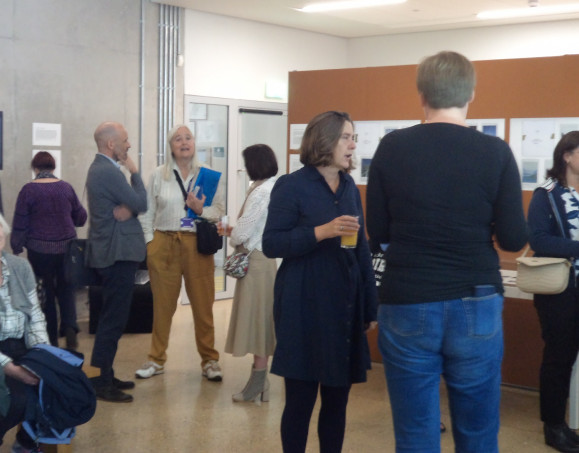
Then on Saturday 21 October the Medway History Showcase will take place at the Royal Engineers Museum, Gillingham where there will be numerous stalls from history and heritage organisations where visitors will be able to find out about the many groups active in the Medway area and more broadly in Kent. As at these previous events, there will be a programme of talks throughout the day and this time the theme is industry. Booking for this free event is at: Medway History Showcase – Royal Engineers Museum (re-museum.co.uk) and if you want to get a flavour of these vibrant history days, please see: https://blogs.canterbury.ac.uk/kenthistory/the-first-of-the-lost-blogs/ which shows the one at Dover last June. For this week, as well as saying farewell to Helen Wright, Research Impact Manager, who has done sterling work at the university, including in conjunction with Dr Diane Heath and her NHLF-funded Medieval Animals Network, it is excellent that Dr Astrid Stilma is leading CCCU’s involvement in the AHRC-funded Aphra Behn project in conjunction with Professor Elaine Hobby (Loughborough University) and other groups in Canterbury. Today (Wednesday) marked the launch of this project and Diane and I attended this event in the Daphne Oram building on the CCCU campus to see a display on Aphra Behn and to hear a short talk by Professor Hobby. There will be many more outreach events linked to this project over the coming months, as well as a major conference at the University of Kent in July 2024. Therefore, please do look out for further details: https://www.aphrabehn.org.uk/
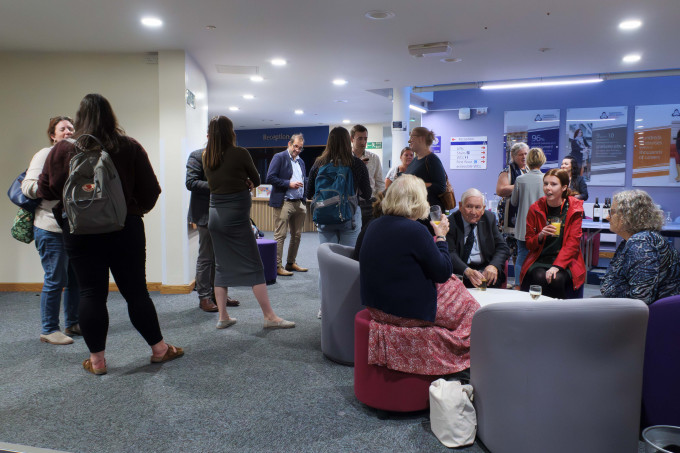
As in previous years, the Centre’s opening event for the new academic year is the joint Michael Nightingale Memorial Lecture with Brook Rural Museum: https://www.agriculturalmuseumbrook.org.uk/ . Taking place last night (Tuesday), it was excellent to be able to welcome the Lord Mayor, Cllr Jean Butcher, and the Lady Mayoress, Mrs Di Baldock to Old Sessions House and the wine reception before the Lecture, the reception sponsored by the Graduate College for which we were very grateful. As you can see, this offered an opportunity for the Lord Mayor to meet the Ian Coulson Award holders – more on that shortly, as well as Professor John Nightingale who is the chairman of the Museum’s board of Trustees.
Before the Lecture, the Lord Mayor presented Ian Coulson Memorial Postgraduate Award certificates to the Award holders for 2023/24, but before that I took the opportunity to say a few words about Ian Coulson, incidentally the evening’s speaker had met Ian when working on volumes relating to Kent. I appreciate that I say this each year but it remains as pertinent today as it did in 2016, albeit perhaps this report on Ian’s funeral remains the best testament to this extraordinary man and a brilliant friend, even though I didn’t know him very long: Ian Coulson and Kent | Centre for Kent History and Heritage (canterbury.ac.uk)
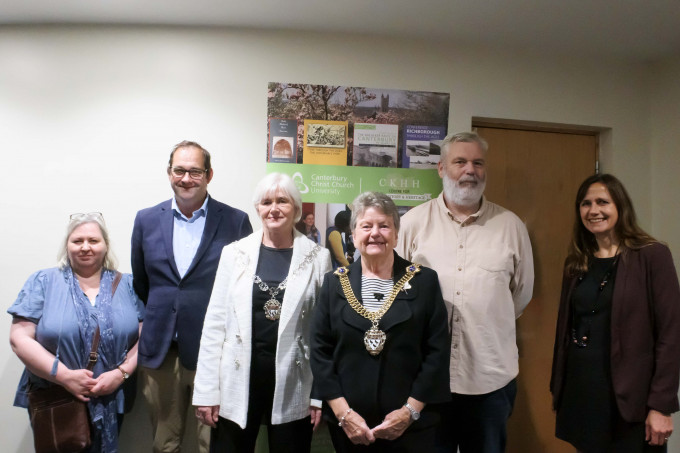
There have been five Awards made for 2023/24 and these are in alphabetical order Michael Byrne (who couldn’t be there) who is starting a part-time doctoral project on an understudied late 15th century ‘Life of Becket’ in the vernacular which was produced in Canterbury by a monk at Christ Church Priory at a time when pilgrimage may have been in a state of flux. Our second who was able to receive her certificate from the Lord Mayor was Tracey Dessoy, who is nearing submission and is examining the women of knightly families in Canterbury and the surrounding area in east Kent during Norman and Angevin times. Next came Kieron Hoyle, a full-time student who is linked to the Janus-Foundation funded ‘Kent’s Maritime Communities’ project, a joint venture between Professor Craig Lambert at the University of Southampton and me. At the conceptual centre of Kieron’s project under the Tudor monarch’s is Dover’s Maison Dieu and she is also engaged in outreach projects with Dover, especially the Maison Dieu restoration project, see Tudor Places issue 8 for a report on Kieron and the Maison Dieu: Tudor Places | Magazine
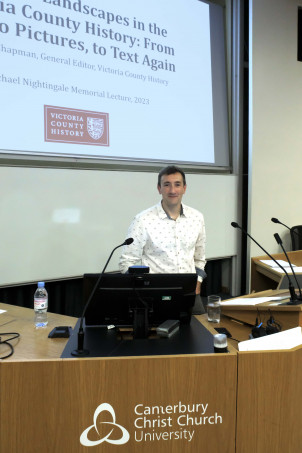
For Peter Joyce’s doctoral project, it is necessary to go to the opposite side of Kent to the Medway towns because he will be examining institutional and other responses to poverty and care for the poor in the early modern period, a time when religious ideas continued to play a central role in the lives of benefactors and beneficiaries. Staying on the county’s northern coast, the final recipient was Jason Mazzocchi who, like Kieron, has a project linked to ‘Kent’s Maritime Communities’. He is investigating ideas about community, social memory, transgression as a political tool and the interface between orality and textual communities among the ‘middle and lower sort’, starting with several cases linked to oyster disputes at Milton, Faversham and Whitstable.
The Lord Mayor having kindly presented these certificates, I called upon John Nightingale to offer a few words about Michael Nightingale his father who was very much the driving force in the foundation of what has become Brook Rural Museum. Moving on, John described the Museum today and work over the last year through funding from the NHLF to enhance the Museum’s offerings to residents and visitors to Brook, partly through work on the considerable agrarian collections in the magnificent late 14th-century barn and early 19th-century oast house and partly through the numerous events provided from talks to demonstrations and including a medieval fayre. Due to this success, the Museum Trustees will be applying soon for a follow-up project.
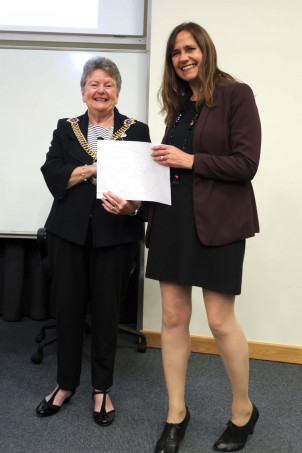
In introducing Dr Adam Chapman, the general editor, it was good to acknowledge the work of the Victoria County History (VCH as it is generally known), albeit Kent compared to some counties only has a small number of volumes. In part for this reason Adam took his audience on a tour of England to demonstrate how the different VCH projects use a range of visual and textual evidence to study parishes as the basic unit of analysis. This major undertaking, which was initially expected to take about 6 or 7 years to encompass all the counties of England has so far yielded 247 ‘big red books’ and 19 of the ‘shorter’ volumes, of which there are two of each for Kent.
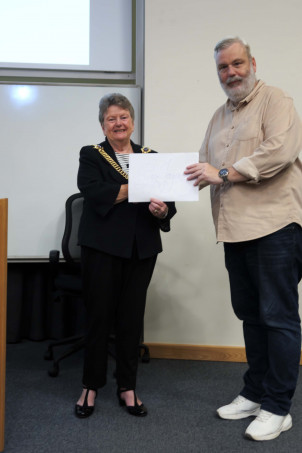
To begin his tour, Adam started by exploring the adjacent Somerset parishes of Dunster, Minehead and Carhampton taking as his base the medieval landscape and examining those who had authority through their landholding, buildings of authority – castles, and places of trade – ports. As he said, for Dunster castle it is amazingly helpful for the historian that this barony has only been held by two families over time, they have been excellent keepers of their own archives and these archives are amazingly well catalogued. In contrast Carhampton, possibly an ancient Roman estate, from the 8th century was in the hands of the king and as a royal estate was where the medieval sheriff held his court. Nevertheless, it would be Minehead on the coast that was to develop and overtake its neighbours through its port and the trade in wool and then cloth. Equally from documentary records it is clear that Minehead was booming in the 1330s, every scrap of land in use, but a similar survey from the 1360s shows an abandonment of the poor agriculturally north coastal strip, this area becoming little more than rough grazing for sheep.
Keeping with Somerset and the theme of the impact of the Black Death on the landscape, Adam took his audience to North and South Cadbury where an Inquisition Post Mortem from 1349 records that these areas were worth nothing to the manorial lord because all the tenants were dead. Then adding to such textual evidence maps, aerial photos and archaeology can bring together this lost pre-Black Death landscape with its numerous tofts and how in the later period the village shrank, the old tofts fossilized in the landscape.
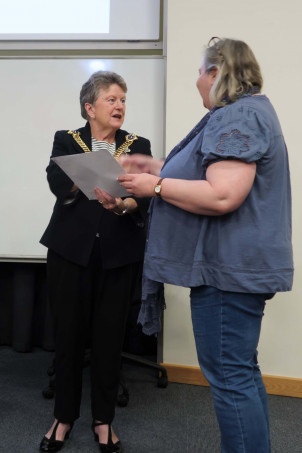
Adam also demonstrated how man-made influencing such as the colonisation of a parish or area by a religious house might also produce what first appears to be a deserted landscape. His example was the activities of the Cistercian monks of Bruern abbey in the Cotswolds. As elsewhere, the Cistercians with their deployment of lay brethren to run their sheep enterprises meant that the villagers were replaced by these lay brothers based on two farmers, another medieval landscape that can be read using documentary and other sources.
Moving north, Adam offered further case studies from Leicestershire and Westmorland before coming back south to Essex and lost landscapes under the sea, as at Walton-Le-Soken. This brought him to Kent, and he speculated how a study of say the Isle of Sheppey might work well in VCH terms. For there are a number of interesting features such as place name features, the role of livestock management, topographical features, the place of Minster as an early ecclesiastical centre, Queenborough as a royal planned town with early artillery fort, and the location of the island’s manors and villages.
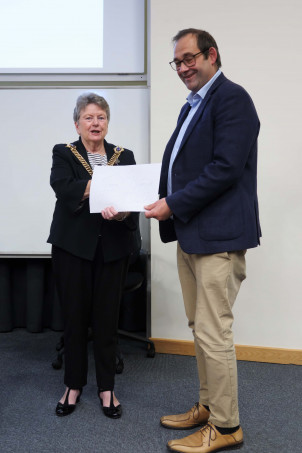
Adam’s talk generated several questions from the enthusiastic audience of staff, students, Trustees and the public before I called on John Nightingale to give the vote of thanks and the event drew to a close with a voluntary retiring collection – thanks to the audience for continuing to support the work of the Museum and the Ian Coulson Award Fund.
As this is quite a long piece already, I’ll just mention a couple of further items from this week. Firstly, Diane Heath had earlier in the day been at Rochester for a final ‘Medieval Animals Heritage’ event. This was in conjunction with the exhibition of the Rochester Bestiary, which is on loan from the British Library and for the children’s activity involved the colouring of a digitally printed miniature replica of an altar piece showing Becket’s return from exile.
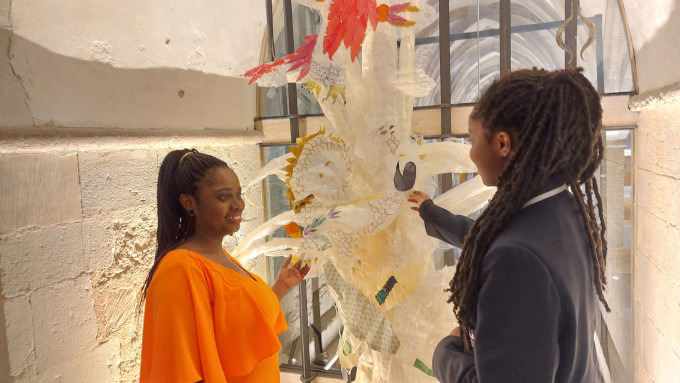
Then secondly, today the Kent History Postgraduates group had a catch-up meeting to start the new academic year. This included people from different ends of the postgraduate journey, such as Jason who is still at an early stage and Tracey and Maureen who are within sight of the point of submission. And although not present because she was out celebrating in Canterbury, the whole group would like to congratulate Janet Clayton for successfully defending her doctoral thesis yesterday (Tuesday) in her viva and thus passing her examination to become a doctor of philosophy – brilliant and well done!
 Centre for Kent History and Heritage
Centre for Kent History and Heritage Sheila Sweetinburgh
Sheila Sweetinburgh 1365
1365

